“The Convention on the Rights of Persons with Disabilities is an international treaty that identifies the rights of persons with disabilities as well as the obligations of States parties to the Convention to promote, protect and ensure those rights”.
“It adopts a broad categorization of persons with disabilities and reaffirms that all persons with all types of disabilities must enjoy all human rights and fundamental freedoms. It clarifies and qualifies how all categories of rights apply to persons with disabilities and identifies areas where adaptations have to be made for persons with disabilities to effectively exercise their rights and areas where their rights have been violated and where protection of rights must be reinforced”.
Extracts from UN-Enable website
As the United Nations Convention on the Rights of Persons with Disabilities has now entered its second decade of existence, this website revisits the importance of this international treaty through the “voices” of people who played or continue to play a major role in making the rights of persons with disabilities a reality. Based on a series of 17 interviews, this investigation can be discovered through two points of entry:
Interview summaries, to learn about the individual paths and views of each of the interviewees that shared their experience, as well as the changes brought about by the Convention in their lives.
A collection of selected extracts from the interviews, providing a cross-cutting perspective, to learn about the Convention’s history, its main outcomes and the challenges lying ahead.




Handicap International’s involvement in the Convention’s drafting process began very early. The present investigation was an opportunity to conduct a retrospective analysis of this involvement.




Here, you will find summaries of the 17 interviews conducted with Disabled People’s Organization activists and former Handicap International staff members. Their testimonies provide an opportunity to learn more about the Convention from their unique points of view, and in the light of their commitment to the process.
This section was built as a selection of quotes extracted from the preceding interviews. These quotes are organized around several thematic areas that emerged out of different cross-cutting perspectives.
The Convention emerged following decades of work by the United Nations to change attitudes and approaches to persons with disabilities. The negotiations began in 2002, and were spread over 8 sessions. They were marked by a special atmosphere, and finally led to the adoption of the text in 2006. The text was ratified and entered into force in 2008.
The Convention led to a clear change of paradigm towards an approach based upon both the effective exercise of rights by persons with disabilities and the empowerment of leaders and their representative organizations. The Convention also enriched international human rights law with innovations such as articles on international cooperation and analyses based on an intersectional understanding of discrimination.
The Convention’s implementation is linked to the CRPD’s mechanisms of international control and monitoring. Civil society also has a say in the process, as it tries to influence governments to push changes through. During the 10 years that have elapsed, legal and conceptual changes have occurred. However, challenges still lie ahead.
Copyright 2023 © Humanity and Inclusion | All Rights Reserved